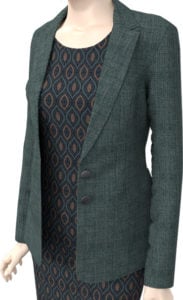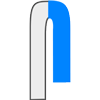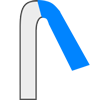Empowering Design For a Unified Future
Join Browzwear, iCare, and Plus One as we empower HKDI's young designers. See how 3D is reshaping fashion with designs focused on comfort and...

Fabric folds are present in many of the garments we wear every day. Collars or lapels are the most common garment attributes for a fold application, but cuffs, hems and other casual neckline designs can utilize folding.
The construction and execution of the fold has a big visual impact on the garment design. Dress shirt collars have a very crisp and stiff fold, while turtlenecks and polo collars have a casual and soft fold. Each of these folds match the overall garment design and fabrication.
Browzwear’s software offers 3 options to create the fold finish to match your garment. The folding options can be applied to your fold line and will affect the final simulated result of your 3D fold. It’s easy to switch between the fold finishes as you are designing in the software to choose the option that’s best for your garment.
 Soft Fold: A soft fold line will produce a very casual looking result. It can be used on polos with a casual rib collar, jackets or sweatshirts with thicker or fluffier fabric, or button up shirts with less structure (think Hawaiian shirts).
Soft Fold: A soft fold line will produce a very casual looking result. It can be used on polos with a casual rib collar, jackets or sweatshirts with thicker or fluffier fabric, or button up shirts with less structure (think Hawaiian shirts).
 Sharp Fold: The visual result of the sharp fold will have a crisp, ironed look. This fold is normally used for formal dress shirts and suit jackets.
Sharp Fold: The visual result of the sharp fold will have a crisp, ironed look. This fold is normally used for formal dress shirts and suit jackets.
 Normal Fold: Landing somewhere in between soft and sharp, the normal fold line is very versatile and will produce an intentional fold without the formality of the sharp fold. This fold type can be used across casual, sportswear, and formal garments.
Normal Fold: Landing somewhere in between soft and sharp, the normal fold line is very versatile and will produce an intentional fold without the formality of the sharp fold. This fold type can be used across casual, sportswear, and formal garments.
Join Browzwear, iCare, and Plus One as we empower HKDI's young designers. See how 3D is reshaping fashion with designs focused on comfort and...
Welcome to BWU Classroom, your gateway to mastering VStitcher, the cutting-edge software transforming the fashion industry.
Discover four proven strategies to seamlessly integrate new 3D fashion design technology into your workflow, boosting efficiency and innovation.